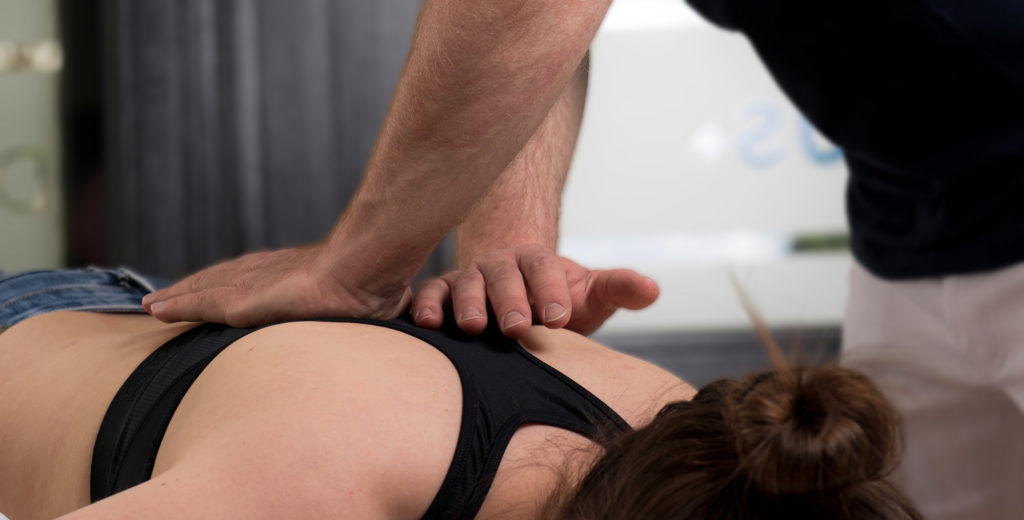You are stressed, your neck tenses, and suddenly it happens. A dull fuzzy feeling in your ear and then ringing. Often your hearing returns within seconds or minutes and disappears as quickly as it came. However, if the symptoms persist, it may be a so-called sudden hearing loss.
Sudden sensorineural hearing loss (SSHL) – A sudden loss of hearing
What is sudden hearing loss?
A sudden hearing loss is a sudden-onset hearing loss, is usually one-sided, and usually lasts longer than 30 minutes. This is often accompanied by a ringing, so-called tinnitus, on the affected side of the ear. Dizziness is rarely a symptom and is possibly a sign of other disorders in the inner ear or central nervous system.
yYour ear, nose, and throat specialist can determine whether you are really suffering from sudden hearing loss by means of a clinical examination and a hearing test called pure tone audiometry.

What are the causes of sudden hearing loss?
The causes of sudden hearing loss appear to be multifactorial. Patients often report the occurrence of this during particularly stressful situations coupled with neck or back pain. But is it the stress? Is it the tension? Or can other causes be found?
One of the most common causes of one-sided hearing loss is a so-called ear wax plug. This can occur spontaneously or much more frequently by the use of cotton swabs, and can cause hearing loss-like symptoms depending on the severity.
However, if this is not the case, other causes of unilateral hearing loss must be ruled out. Other causes of sudden hearing loss can be subdivided into organic, functional and psychological components.
Organic triggers include circulatory disorders in the inner ear, noise damage to the inner ear, or head trauma with damage to the inner ear function. Furthermore, tumors of the brain or brain stem (among others, the so-called acoustic neuromas) can irritate the auditory nerve, possibly also the equilibrium nerve or the brain nerve nuclei and literally put them under pressure, which may cause of the above-mentioned disorders.

Functional disorders that can trigger a hearing loss include cervical spinal stenosis. Recent studies show a direct neural connection between the head and neck joints of the cervical spine and the auditory and equilibrium nerve nuclei in the brainstem. The exact functional meaning of this still puzzles conventional medical doctors. From a manual therapy and osteopathic point of view, however, a phenomenon that has been observed for a long time now can also be explained anatomically. Thus, disturbances in the joint position and in the surrounding muscular structure of the head joints could contribute to hearing loss via the above mentioned connection.
Muscular tension may occur locally due to overload or trauma, or is a symptom of a more remotely-related disorder. For example, an unrecognized pelvic slant may sooner or later lead to muscular tension in the neck and neck area and may cause the symptoms described above.
Due to the aforementioned phenomena, it can also lead to irritation of the autonomic nervous system, which is located in the immediate anatomical proximity to the spine, ribs, and accompanying muscles. An irritation of the autonomic nervous system may, for example, trigger a hearing loss due to its vascular narrowing effect.
Another common problem is teeth grinding, or bruxism. Through a strong nocturnal “biting” or “crunching” numerous tensions build up in the chewing muscles in the head and neck area and can thus be the starting point for pain.
Not only can grinding cause discomfort, but also the so-called interference fields themselves (scarring or silent inflammation e. g. in the tooth area etc. ). The exact mechanism of action for this remains unclear. Explanatory approaches range from muscular tension to disturbances of microcirculation to the influence of reflex zones and other factors.
Of course, we must not forget the psyche in the overall picture. Each illness causes psychological distress, and vice versa, psychological distress can lead to physical symptoms – be it due to stress-induced vessel constrictions, changes in nerve stimulus thresholds, or even again due to muscle tension.
Often the causes at the time of the occurrence of a hearing loss are multifactorial, i. e. there are usually several factors that are connected in time, which then determine the organic symptoms.
What is involved in diagnosing a sudden hearing loss?
The many possible causes of a sudden hearing loss need to be thoroughly investigated in order to eliminate organic causes promptly and to provide appropriate treatment promptly.
The clinical examination by a throat, nose and ear doctor is absolutely necessary. This includes a microscopic examination of the ears as well as a hearing test to determine the extent of the impairment. Further tests such as auditory nerve measurement, the so-called BERA, and possibly an MRI of the head can serve to exclude central nervous causes. In some cases, a surgical procedure, so-called tympanoscopy, to exclude fluid from the inner ear may also be an option. Your ENT doctor will advise you on the need for individual examinations as well as their risks and opportunities.
The detection of functional disorders as the cause of a hearing loss or the diagnosis of disturbance fields require special training in manual medicine / chirotherapy, osteopathy, naturopathy and acupuncture. In this way, partially hidden problems can be identified and treated accordingly.
In order to uncover psychological components, a psychologist or psychiatrist is required. Further neurological examinations may also be necessary to clarify all organic causes.

What therapy for sudden hearing loss is performed?
The treatment of a hearing loss is primarily based on the identified causes.
In conventional throat, nose, and ear medicine, therapy is carried out according to the recommended guidelines for high-dose cortisone therapy. This can be done as a tablet, intravenously, or even with a needle into the middle ear.
However, functional disturbances, which occur very often at the same time, are usually completely disregarded. Nevertheless, experience shows that these often occur in parallel and may trigger or even prolong the symptoms of the hearing loss. The appropriate treatment options include manual medicine / chirotherapy, osteopathy, acupuncture and neural therapy.
Numerous psychological and psychiatric services are available for the treatment of internal tensions, anxiety, and disturbances.
Despite numerous diagnostic and therapeutic options, it is not always possible to find a cause and achieve a successful treatment. In the event of permanent hearing impairment after a thorough audit of the hearing function, it is possible to provide hearing aids in order to reduce the functional impairment and restore quality of life.
What can I do on my own if I experience sudden hearing loss?
First of all, it is important to ensure sufficient hydration if there is no kidney disease. This means that at least the recommended daily amount of 1.5 to 2 liters of fluids, or in the case of sudden hearing loss, more should be consumed.
Furthermore, the ears should be protected from noise at the time of the hearing loss and for up to 6 weeks after the symptoms have subsided. Concerts, clubs, or noisy crowds of people etc. should be avoided or only visited with appropriate hearing protection.


In addition, relaxation techniques, such as meditation or muscle-relaxing methods, and heat treatment of tense muscle groups, such as a hot bath, are often beneficial and may reduce triggers.
Finally, it is to be careful not to take medication without consultation with an ENT specialist in order to supposedly influence the situation. Common opinions about so-called “blood thinners” are often wrong. On the contrary, some of these medications may even be a disadvantage, as they damage the inner ear, so they may have ototoxic effects.
If you have any questions or would like a treatment appointment, please contact us at 040 / 46 774 470 or at info@hno-plus-hamburg.de
27 August 2021
Intestinal health and its importance for ear, nose and throat medicine.
Intestinal treatment Hamburg
Intestinal health and its importance for ear, nose and throat medicine.
More...
27 August 2021
Interference Fields – The Mumbled Pain of the Body
Craniomandibular dysfunction (CMD) – the jaw joint and its pitfalls
Your scar itches or hurts when...
17 August 2021
Hearing Loss – Sudden Hearing Loss
Sudden sensorineural hearing loss (SSHL) – A sudden loss of hearing
You are stressed, your neck tenses,...
16 August 2021
Cranio-mandibular dysfunction (CMD) - the jaw joint and its pitfalls
Craniomandibular dysfunction (CMD) – the jaw joint and its pitfalls
CMD and TMJ – What are...
